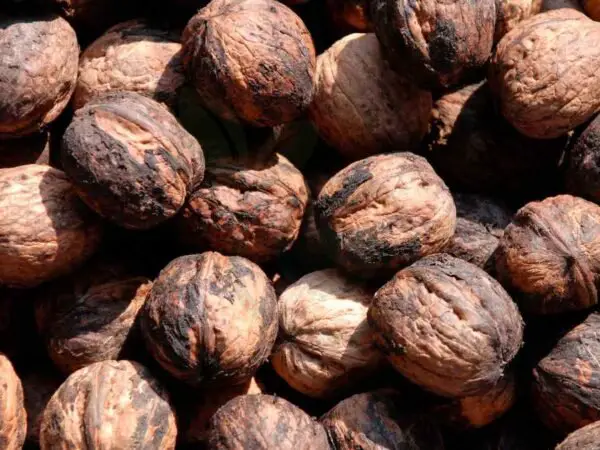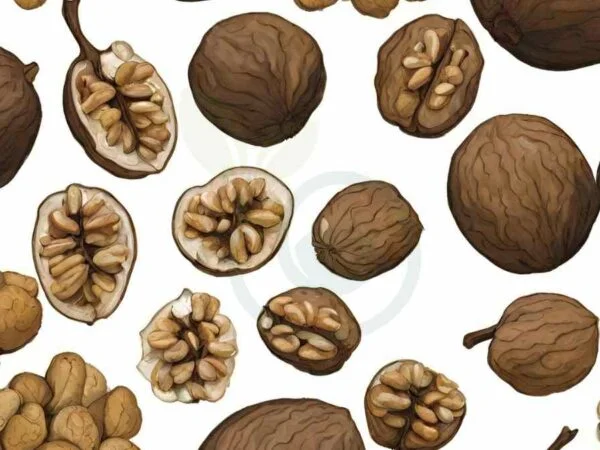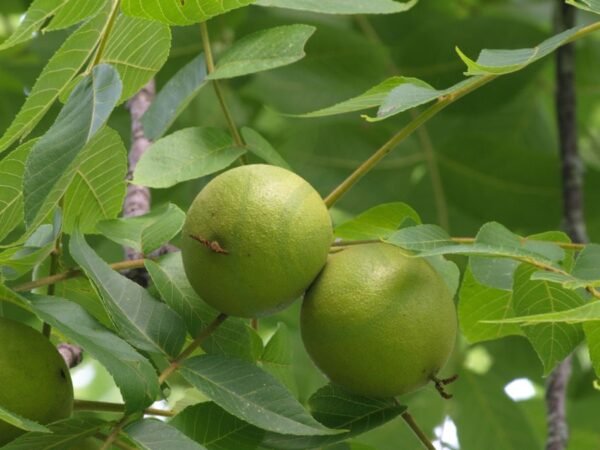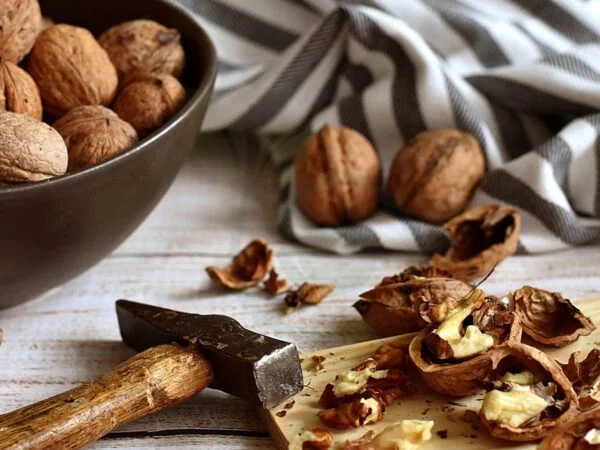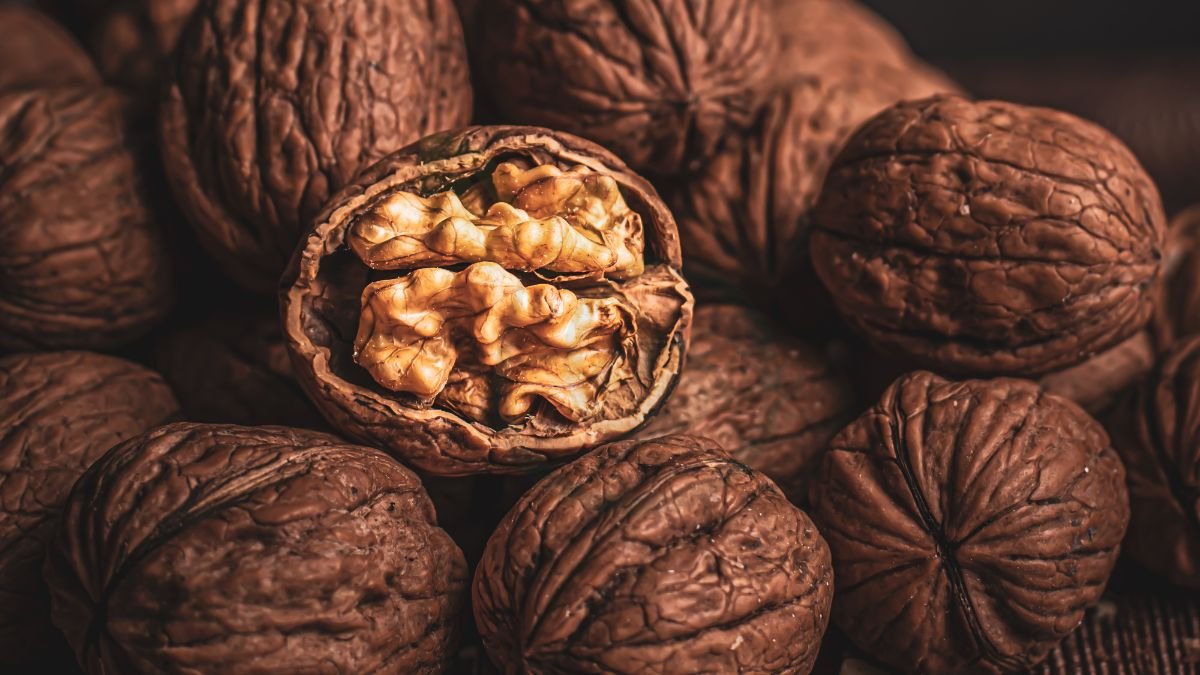
If you're wondering how to wash and clean black walnuts, you've come to the right place. I can guide you through the process step by step, so you can enjoy these delicious nuts without any hassle.
To clean black walnuts, start by removing the hulls using gloves to prevent staining your hands. Then, soak the nuts in water for a few hours or overnight to soften the remaining debris. After soaking, scrub the black walnuts with a brush to remove any remaining hulls or dirt. Finally, rinse the nuts thoroughly and allow them to dry completely before storing or cracking them open to enjoy the tasty kernels inside.
Ready to elevate your walnut cleaning game? I've got more tips and tricks to share for getting those black walnuts sparkling clean and ready to eat.
Key Takeaways
- Harvest black walnuts at the right time: Gather them when the husks are turning black to ensure optimal flavor.
- Pre-wash preparation is key: Soak the nuts in water to soften the husks before washing.
- Use effective washing techniques: Scrub the nuts with a brush under running water to remove debris and stains.
- Ensure proper drying and curing: Lay the washed nuts in a single layer to dry thoroughly before storing.
- Crack black walnuts safely: Wear gloves and use a sturdy nutcracker to avoid injuries.
- Clean up post-crack: Remove any remaining shell fragments to prevent contamination.
Harvesting Basics
Timing Matters
Plan to collect black walnuts in the fall season when ripe, then let them dry for 6 months. Consider the time needed for cleaning and drying.
Gathering Nuts
Wear protective gloves to avoid staining hands while collecting black walnuts. Drop nuts in a bucket, hose them down, and soak to soften hulls.
Initial Cleaning
Hose down black walnuts to remove surface dirt before using a gentle scrubbing brush. Rinse multiple times to ensure all residue is removed.
Pre-Wash Preparation
Sorting Walnuts
Separate the good walnuts from the bad ones by discarding floaters in water. Inspect each walnut individually to ensure quality nuts are kept. Sort based on size and condition.
Removing Debris
Shake the walnuts vigorously to dislodge debris inside the shells. Use a small tool to pick out stubborn debris stuck in crevices. Ensure all debris is removed before proceeding.
Husk Removal
Peel off the outer husk of black walnuts to reveal the hard shell inside. Use gloves or a cloth to protect your hands while removing husks. Dispose of the husks properly as they can be toxic.
Washing Techniques
Soaking Methods
k the cleaned walnuts in water to soften the remaining hull residue. Change the soaking water regularly to prevent it from turning black due to the hulls. Allow the walnuts to soak for an adequate amount of time for effective cleaning.
Rinse and Repeat
Rinse the soaked walnuts thoroughly to remove loosened residue. Repeat the rinsing process until the water runs clear, indicating the nuts are clean. Drain the walnuts properly after each rinse to avoid waterlogging.
Scrubbing Tips
Use a soft-bristled brush to scrub the walnuts gently to remove stubborn residue. Focus on areas where residue is still visible to ensure thorough cleaning. Avoid using harsh scrubbing tools that may damage the nuts.
Drying and Curing
Air Drying
Lay out the cleaned walnuts in a single layer to air dry for several weeks. Choose a well-ventilated area away from direct sunlight for optimal drying. Rotate the walnuts periodically to ensure even drying on all sides.
Sun Drying
Consider sun drying the cleaned walnuts for faster drying results. Place the walnuts in a sunny spot with good airflow to expedite the drying process. Monitor the walnuts closely to prevent over-drying or spoilage.
Storage for Curing
Store the dried walnuts in a cool, dry place to cure them for long-term storage. Use airtight containers or bags to protect the walnuts from moisture and pests. Label the storage containers with the date of drying for easy tracking.
Cracking Safely
Tools Needed
- Gather essential tools like gloves, buckets, brushes, and knives for cleaning black walnuts.
- Consider using a nutcracker or hammer for cracking open the dried walnuts effectively.
- Have a hose with a power washer extension ready for efficient cleaning.
Technique Mastery
- Master the art of cracking black walnuts open without damaging the nut meat inside.
- Perfect your cleaning technique to ensure the walnuts are free from any residue.
- Practice efficient sorting methods to streamline the walnut cleaning process.
Post-Crack Cleaning
Separating Shells
Carefully crack open dried walnuts to separate shells without damaging the nut meat inside. Utilize a dull knife or hammer to crack the nuts shells along their natural seams. Remember to exercise patience and precision to avoid crushing the nut meat while separating.
Final Rinse
Give the cracked walnuts a final rinse to eliminate any shell fragments or debris remaining. Use running water to ensure thorough cleaning before consuming the nuts. After rinsing, make sure to drain the walnuts completely to prevent excess moisture retention.
Cooking Applications
Flavor Preservation
Preserve the natural flavor of black walnuts by cleaning and drying them thoroughly. Store in airtight containers for freshness. Avoid exposure to strong odors or moisture that can alter taste.
Recipe Ideas
Explore recipes using black walnuts for a unique flavor profile. Try salads, baked goods, and desserts to highlight the nutty taste. Add chopped or ground black walnuts to dishes for extra texture and flavor.
Shell Uses
Garden Benefits
Black walnut hulls can be utilized as a natural pesticide in your garden, thanks to their antiparasitic properties. Consider composting the husks to enrich the soil with juglone, promoting plant growth. Strategically planting black walnut trees in your garden can help deter specific pests and insects.
Craft Projects
Dried black walnut shells are perfect for crafting projects like ornaments or jewelry. Get creative by painting or varnishing the cleaned walnut shells to create decorative pieces. Explore various DIY ideas incorporating black walnut shells for a unique and eco-friendly touch.
Storage Solutions
Airtight Containers
Invest in airtight containers or resealable bags for storing cleaned black walnuts. These containers should be tightly sealed to prevent moisture or pests from compromising the quality of the walnuts. Labeling the containers with the storage date helps in tracking the freshness of the walnuts.
Cool, Dry Places
Store the cleaned and dried black walnuts in cool, dry areas that are shielded from direct sunlight. Avoid placing them near heat sources or in humid environments to prevent spoilage. Opt for a well-ventilated space for long-term storage of black walnuts.
Final Remarks
You now possess the know-how to clean and utilize black walnuts efficiently. From harvesting to storage, each step plays a crucial role in enjoying the nut's goodness. Remember to follow safety precautions during cracking and utilize the shells for various purposes. By incorporating these techniques, you can savor the rich flavors of black walnuts in your favorite recipes and benefit from their nutritional value. Take pride in your newfound walnut-cleaning skills and share them with others who might find this information valuable.
Frequently Asked Questions
How do I harvest black walnuts properly?
To harvest black walnuts correctly, follow these steps:
- Collect ripe walnuts from the ground
- Remove husks using gloves
- Rinse the nuts thoroughly
- Dry them before storage
Can you provide tips for washing black walnuts effectively?
For washing black walnuts:
- Use a stiff brush to remove dirt
- Soak nuts in water and scrub gently
- Rinse with clean water and dry completely
- Ensure no moisture remains to prevent mold
What is the best way to crack black walnuts safely?
To crack black walnuts safely:
- Use a sturdy nutcracker or hammer
- Place the nut on a hard surface
- Apply controlled force to crack open
- Be cautious to avoid crushing the kernel inside
How should I store cracked black walnuts for freshness?
To store cracked black walnuts:
- Keep in an airtight container
- Store in a cool, dry place away from sunlight
- Refrigerate for longer shelf life
- Use within a few months for best flavor
What are some cooking applications for black walnuts?
Black walnuts can enhance various dishes:
- Add to salads or baked goods for crunch
- Blend into pesto or sauces for depth of flavor
- Sprinkle over yogurt or oatmeal for texture
- Incorporate into desserts like brownies or cookies
Image Source: Paid image from CANVA

